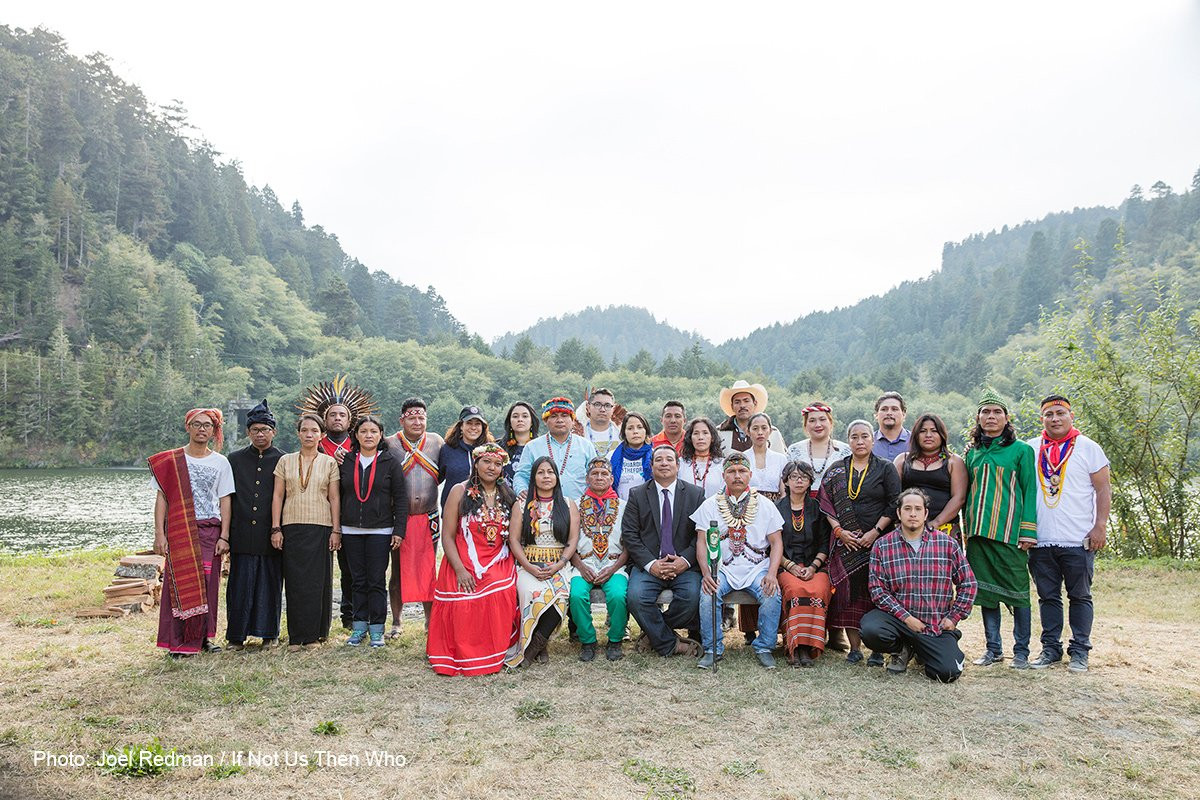Burning Forests Protects Salmon—and Other Lessons I Learned from the Yurok

“We are made for this land. And this land is made for us.” —Tanya Sangrey, Yurok Tribe
These words struck me as I huddled around a large, glistening campfire on the edge of the Klamath River in Yurok Country, California.
The woman who spoke them was Tanya Sangrey, a leader and member of the Yurok Tribe, California’s largest Native American tribe. Her audience consisted of communicators, like me, and more than thirty indigenous leaders from twelve countries in Latin America and Indonesia. We came from all over, but we shared the same mission: to protect Indigenous Peoples’ land rights and forests. We gathered ahead of an international climate change summit to learn from each other's successes and challenges.
In the five years that I have been working with indigenous leaders to communicate their stories to outside audiences, I have often heard them make remarks similar to Tanya’s.
However, never had I understood the true meaning behind them until I sat down with Frank Lake, a Native American ecologist working with the US Forest Service, who conducts research on the impact of traditional fire burning practices on the Redwood National Forests.
Frank showed me how intrinsically interdependent native peoples’ cultural traditions are to the health of their forests and the animal beings who share the land.
In his latest research, Frank finds that cultural burnings practiced by the Yurok not only prevent larger wildfires from blazing through the state’s precious redwood forests but also improve the Klamath River’s fisheries. How? The fires produce smoke that blocks the sun’s rays and cools the river, which makes it possible for salmon to spawn during the year’s warmer periods.
The burnings also produce plant stems optimal for traditional basket weaving, and rid the forest of underbrush and diseased plants, further protecting the redwoods from forest fires.
And the Yurok are not alone; around the world, there is an interdependent relationship between native people’s cultural traditions and the health of forests. In Guatemala’s Mayan Biosphere Reserve, for example, native communities use traditional practices that protect the country’s tropical forests more effectively than any other forest manager during peak fire seasons.
Tanya’s words continue to echo in my head when I sit to reflect on how I relate to the natural world (which, as an immigrant to the US, is quite hard for me because I grew up in two countries). The truth is, I have heard the same sentiment from Candido Mezua, from the Embera tribe in Panama; Dinamam Tuxa, a Tuxa leader from Brazil; and Mina Setra, a Dayak woman from Indonesia. Sitting around the campfire, bellies full of grilled salmon caught in the river just a few feet from us, it seemed as though we all took a deep breath of acknowledgment and let Tanya’s words sink in.
It became clear that the connection that Indigenous Peoples all around the world feel with Mother Nature is what we city folk need to dig deep for if we are serious about stopping climate change. We were made for this planet, and therefore, we are responsible for protecting it.

Editor’s note:
In September 2018, in advance of an international climate change summit, Wanda accompanied a group of communicators and indigenous leaders from more than 30 countries on a trip to the Yurok Reservation in northern California. The delegation of indigenous leaders—from tropical forest countries in Mexico, Central America, the Amazon and Indonesia—belonged to a global network of native peoples advocating for communal rights to their territories, and, by extension, for the right to be consulted on how best to save the planet.
For more information on their trip to California, check out these news stories: